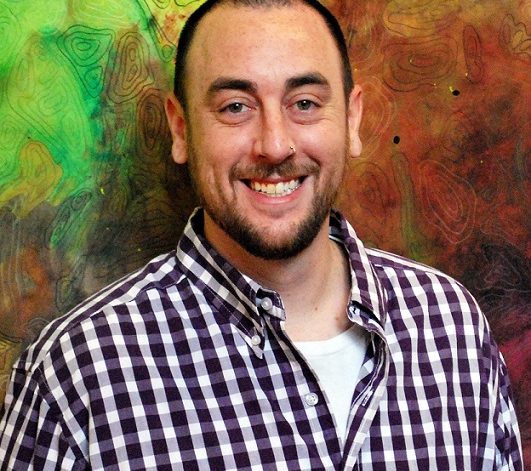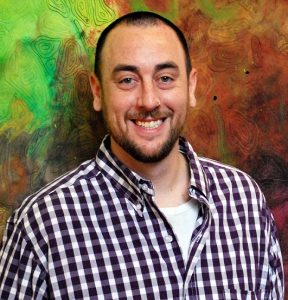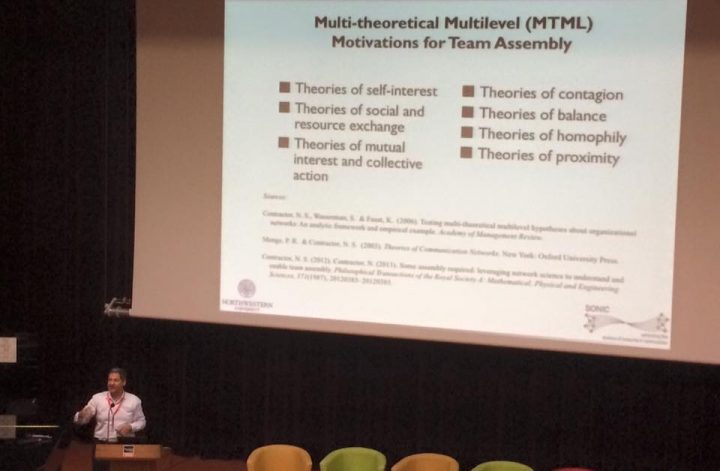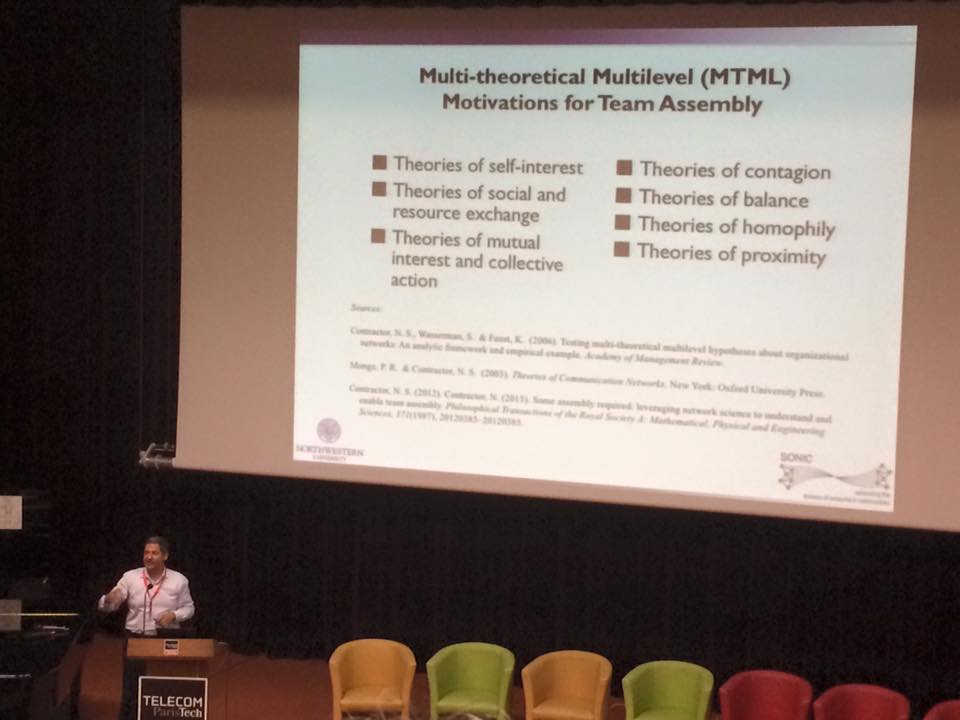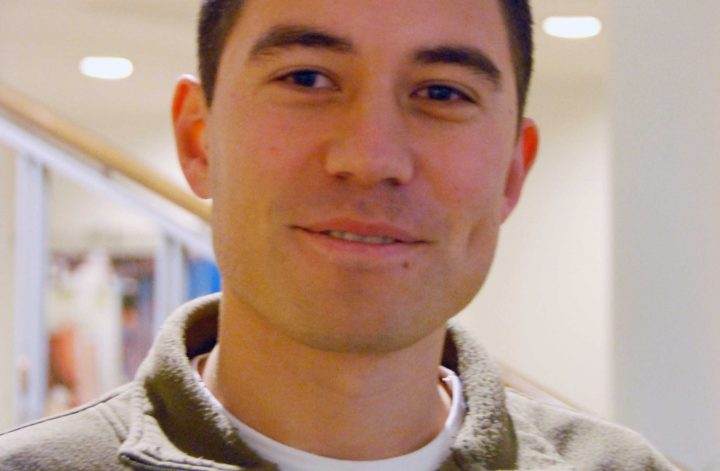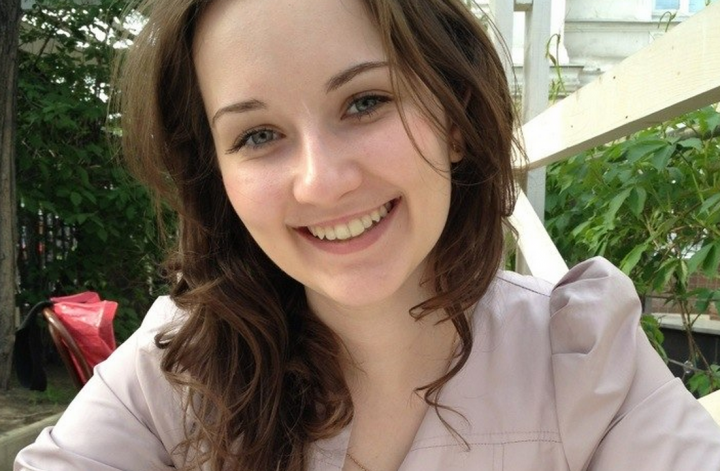Alina Lungeanu successfully defended her dissertation proposal titled “Assembly Mechanisms of Interdisciplinary Scientific Teams and Their Impact on Performance” on September 7th, 2015. The committee it was presented to included Noshir Contractor (chair), Darren Gergle, Brian Uzzi, Uri Wilensky, and Teresa Woodruff. Alina is currently a Research Associate at the Population Research Institute, The Pennsylvania State University. Congratulations Alina!
Mapping How Tor’s Anonymity Network Spreads Around the World
The Onion Router or “Tor” Network is a free web browser that allows for seemingly anonymous communication across the web. It does this by directing one’s traffic through numerous relays (nodes) all over the world, making it difficult to pinpoint the original user. Originally developed by the U.S. Naval Research Laboratory and DARPA to protect U.S. intelligence communications, the Tor browser allows access to the “deep web” which often serves as a black market for all sorts of illegal activity, such as drug trafficking, arms dealing and child pornography.
Perhaps ironically, The Tor Project continues to receive the majority of its funding from the U.S. government and other large federal agencies, such as the National Science Foundation. This begs the question of Tor’s real purpose. Is it truly an avenue for “aiding democracy in authoritarian states” or is it just another form of government surveillance?
The answer to this question may lie in the network itself. To understand The Onion Router on a deeper level, we can begin by viewing real time maps of the Tor Networkand eventually mapping the exit nodes.
The SONIC Speaker Series: Ryan Boyd on Nov. 18th, 2015
SONIC Lab is proud to welcome Ryan Boyd, who will present a talk on Wednesday, November 18th, 2015 at 10:00 AM in the SONIC Lab in the Frances Searle Building 1-459. All are welcome to attend.
To schedule a one-on-one meeting with Ryan Boyd please schedule a time here.
Title
A Way with Words: Language and Psychological Science in the Modern Era
Abstract
In the modern era, people generate data on a scale never before witnessed in human history. In particular, the internet creates a space where people can express their thoughts, feelings, and behaviors in their own words. The language that people share inherently reflects the precise phenomena that many social scientists seek to capture and understand. However, language data can often be difficult to quantify and understand in objective, empirical terms. How can we use a person’s language to better understand their social and psychological processes? This talk provides an overview of research that illustrates just how powerful words can be for understanding a person’s mental universe. Research discussed will include topics such as psychological fingerprinting, values, mental health, and often-overlooked social processes.
Biography
Ryan Boyd is a senior graduate student in the Department of Psychology at the University of Texas at Austin. Ryan is considered to be a leading expert on natural language, big data, and social psychology. Additionally, he is the developer of various language analysis applications that have been adopted for research in over 30 countries around the world. His work has been published in top psychology journals, including Psychological Science, and has been repeatedly featured at interdisciplinary research conferences.
Please contact Meghan McCarter with any questions or comments.
The SONIC Speaker Series: Christopher Marcum on Nov. 4th, 2015
SONIC Lab is proud to welcome Christopher Marcum, who will present a talk on Wednesday, November 4th, 2015 at 4:00 PM in the SONIC Lab in the Frances Searle Building 1-459. All are welcome to attend.
To schedule a one-on-one meeting with Dr. Marcum please schedule a time here.
Title
An Ego-Centric Relational Events Model of Buffet Selection Processes in an Experimental Virtual Reality Setting
Abstract
The relational events model (REM) framework for social action (Butts 2008) has recently been demonstrated to be useful as a model of a wide range of temporally unfolding events and not just limited to the dyadic case as originally designed. The framework has shown promise, for example, in modeling ego-centric studies, as well as event histories that involve multiple event types and exogenous events (Marcum & Butts 2015). Additionally, recent work has demonstrated how careful use of support constraints within the REM framework facilitates its application in experimental designs (Tranmer et al. 2015). We extend this line of research by combining these various generalized applications of the REM in a single scenario—ego-centric event histories with multiple event types and support constraints in an experimental design.
Two hundred twenty-one overweight mothers of children between 4 and 5 were randomized to one of four feedback conditions that emphasized different health information about eating and health: 1) food safety control (Control); 2) behavioral-risk information; or 3), behavioral-risk information plus personal family health history-based risk assessment. After a short survey was administered to the participants and they were given their randomly selected feedback to read, each mother put on a head-mounted display helmet and was immersed in a virtual buffet environment. In the buffet, mothers selected from a set of virtual food and drink choices for their child’s lunch. Prior work (McBride et al. 2013) has shown that the feedback conditions deferentially impacted the total number of calories on the plate at the end of the simulation. Here, however, we evaluate whether the behavioral food selection process giving rise to those choices also differs by feedback condition.
We use the REM framework to address a simple research question: 1) to what extent do the feedback conditions shape the behavioral process unfolding during the buffet simulation? We specify sufficient statistics for both environmental and behavioral constraints on the buffet selection process. These include structural statistics for the food ordering effects and differential serving sizes, and behavioral statistics for choice inertia, “saving dessert for last” and “grazing versus browsing.” Preliminary REM results show evidence of differential preferences for the rate at which certain foodstuffs are selected, that smaller portion size drives actors to make multiple selections of the same foodstuff in a row, healthful choices are likely to precede unhealthful ones, and spatial ordering effects. Differential impacts of the feedback condition on the behavioral selection process will be discussed in the context of REM model selection.
Biography
Dr. Marcum received his Ph.D. in sociology from the University of California-Irvine in 2011. His dissertation research focused on health and social structural explanations of age differences in daily social interactions. His current research seeks to understand how health shapes family network processes across the life course, on the one hand, and to develop statistical models for network analysis on the other. Through his methodological work in mathematical sociology he has demonstrated expertise in modeling a wide range of social systems, including: interorganizational disaster response networks, relational events processes, epidemic dynamics, and inter-generational communication.
A recording of Christopher Marcum’s Presentation can be found here, or can be viewed below!
The SONIC Speaker Series: Polo Chau on Oct. 7th 2015
SONIC Lab is proud to welcome Polo Chau, who will present a talk on Wednesday, October 7th, 2015 at 3:00 PM in the SONIC Lab in the Frances Searle Building 1-459. All are welcome to attend. To schedule a one-on-one meeting with Dr. Chau please schedule a time here. Please contact Meghan McCarter with any questions or comments.
Data Mining Meets HCI: Scalable Interactive Tools for Large Graph Sensemaking
Abstract
My group at Georgia Tech innovates at the intersection of Data Mining and Human-Computer Interaction (HCI) to help people make sense of massive datasets. We combine the best from both worlds to create novel tools for billions-scale graphs. I will describe some of our latest works and ideas:
1) Attention Routing, based on anomaly detection, that draws people’s attention to interesting parts of the graph. Examples include the Polonium and Aesop malware detection technology, deployed and patented by Symantec, that unearth malware from 37 billion machine-file relationships, with up to 99% detection rate; the NetProbe system detects auction fraud on eBay and fingers bad guys by identifying their networks of suspicious transactions.
2) Mixed-initiative graph sensemaking, such as the Apolo system and the MAGE system that combines machine inference and visualization to guide the user to interactively explore large graphs.
3) Scalable analytics that leverages virtual memory to enable billion-node computation on a single PC, using simple code that outperforms state-of-the-art techniques.
Biography
Duen Horng (Polo) Chau is an Assistant Professor at Georgia Tech’s School of Computational Science and Engineering, and an Associate Director of the MS Analytics program. Polo holds a PhD in Machine Learning and a Masters in human-computer interaction (HCI). His PhD thesis won Carnegie Mellon’s Computer Science Dissertation Award, Honorable Mention.
Polo’s research lab bridges data mining and HCI to solves large-scale, real world problems. They develop scalable, interactive, and interpretable tools for big data analytics. Their patented Polonium malware detection technology protects 120 million people worldwide. Their auction fraud detection research was widely covered by media. Their fake review detection research received the Best Student Paper Award at the 2014 SIAM Data Mining Conference.
Polo received faculty awards from Google, Yahoo, and LexisNexis, Raytheon Faculty Fellowship, Edenfield Faculty Fellowship, Outstanding Junior Faculty Award. He is the only two-time Symantec fellow and an award-winning designer.
A recording of Polo Chau’s Presentation can be found here, or can be viewed below!
The SONIC Speaker Series: Arno Scharl on Sept. 23rd, 2015
SONIC Lab is proud to welcome Arno Scharl, who will present a talk on Wednesday, September 23rd, 2015 at 10:00 AM in the SONIC Lab in the Frances Searle Building 1-459. All are welcome to attend. To schedule a one-on-one meeting with Dr. Scharl please schedule a time here. Please contact Meghan McCarter with any questions or comments.

Web Intelligence and Visual Analytics to Reveal the Impact of Online Communication
Abstract
The visual analytics tools of the webLyzard Web intelligence platform show the lexical, geospatial and relational context of topics and entities referenced news and social media coverage. This talk illustrates the platform’s capabilities with examples from the Media Watch on Climate Change, the U.S. Climate Resilience Toolkit and the NOAA Media Watch. These applications aggregate environmental Web content from a wide range of online sources, visualize patterns identified in the gathered content, and have led to the development of the webLyzard Stakeholder Dialog and Opinion Model (WYSDOM). Going beyond bipolar assessments of sentiment, WYSDOM provides real-time insights into the success of marketing and public outreach activities. It enables scientists and communication professionals to better understand how different stakeholders perceive observable risks and policy options, how specific media channels react to new insights, and how journalists present scientific knowledge to the public.
Three ongoing research projects advance the presented methods for knowledge extraction [2] and visualization [3]: ASAP increases the scalability of these methods; PHEME enriches their functionality by adding veracity detection to reveal online myths and rumors; DecarboNet extends and applies them to build a knowledge co-creation platform [1] that combines content analysis and social network analysis to identify information diffusion patterns within and across online communities.
Biography
Prof. Arno Scharl heads the Department of New Media Technology at MODUL University Vienna, and is the managing director of webLyzard technology. Prior to his current appointments, he held professorships at the University of Western Australia and Graz University of Technology, and was a Visiting Fellow at Curtin University of Technology and the University of California at Berkeley. Arno completed his doctoral research and habilitation at the Vienna University of Economics and Business. Additionally, he holds a PhD from the University of Vienna, Department of Sports Physiology. Having authored more than 160 refereed publications and edited two books in Springer‘s Advanced Information and Knowledge Processing Series, his research interests focus on Web intelligence and big data analytics, human-computer interaction, and the integration of semantic and geospatial Web technology.
References
- Scharl, A., Hubmann-Haidvogel, A., Sabou, M., Weichselbraun, A. and Lang, H.-P. (2013). “From Web Intelligence to Knowledge Co-Creation – A Platform to Analyze and Support Stakeholder Communication”, IEEE Internet Computing, 17(5): 21-29.
- Scharl, A., Herring, D., Rafelsberger, W., Hubmann-Haidvogel, A., Kamolov, R., Fischl, D., Föls, M. and Weichselbraun, A. (2015). “Semantic Systems and Visual Tools to Support Environmental Communication”, IEEE Systems Journal: Forthcoming (Accepted 31 July 2015).
- Weichselbraun, A., Gindl, S. and Scharl, A. (2014). “Enriching Semantic Knowledge Bases for Opinion Mining in Big Data Applications”, Knowledge-Based Systems, 69: 78-86.
Noshir Contractor gives keynote address at the 2015 ASONAM Conference
Noshir Contractor gave a keynote talk at the 2015 IEEE/ACM International Conference on Advances in Social Networks Analysis and Mining on August 27th in Paris, France. The title of his speech was “Leveraging Computational Social Science to address Grand Societal Challenges.”
To read more about the conference and it’s keynote speakers, including Contractor, click here.
The SONIC Speaker Series: Ludo Waltman on Sept. 9th, 2015
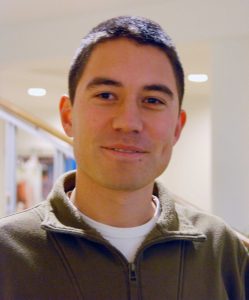 SONIC Lab is proud to welcome Ludo Waltman, who will present a talk on Wednesday, September 9th, 2015 at 10:00 AM in the SONIC Lab in the Frances Searle Building 1-459. All are welcome to attend. To schedule a one-on-one meeting with Dr. Waltman please schedule a time here. To sign up for his workshop, click here. Please contact Eric Forbush with any questions or comments.
SONIC Lab is proud to welcome Ludo Waltman, who will present a talk on Wednesday, September 9th, 2015 at 10:00 AM in the SONIC Lab in the Frances Searle Building 1-459. All are welcome to attend. To schedule a one-on-one meeting with Dr. Waltman please schedule a time here. To sign up for his workshop, click here. Please contact Eric Forbush with any questions or comments.
Large-scale analysis of bibliometric networks: Tools, techniques, and applications
Abstract
The analysis of bibliometric networks has the potential to offer deep insights into the structure and dynamics of science. I will provide an overview of research into bibliometric network analysis at the Centre for Science and Technology Studies (CWTS) of Leiden University. Two popular software tools for the analysis and visualization of bibliometric networks have been created at CWTS. These tools, VOSviewer (www.vosviewer.com) and CitNetExplorer (www.citnetexplorer.nl), will be demonstrated and the underlying network analysis techniques will be discussed. A number of large-scale applications of bibliometric network analysis will be presented. One application investigates the degree to which network science is evolving to become a single unified research field. Other applications are concerned with research planning and research evaluation. In these applications, bibliometric network analysis is used to identify the key research strengths of a university, to study the interdisciplinary nature of modern science, and to detect new emerging research areas.
Biography
Ludo Waltman is a senior researcher at the Centre for Science and Technology Studies (CWTS) of Leiden University, where he leads the research program on advanced bibliometric methods. Ludo’s research interests focus on methodological topics in the field of bibliometrics and scientometrics, in particular the analysis and visualization of bibliometric networks and the development of bibliometric indicators. Together with his colleague Nees Jan van Eck, Ludo has developed two software tools for the analysis and visualization of bibliometric networks: VOSviewer and CitNetExplorer. Ludo serves as Editor-in-Chief of Journal of Informetrics, one of the leading journals in the field of bibliometrics and scientometrics. Ludo also has an extensive experience in the use of bibliometric network analysis in commissioned research projects for universities, research funders, and scientific publishers.
Workshop ‘Network visualization using VOSviewer’
Date & Time: September 9th, 2 pm
Location: SONIC Lab, room 1-459, Francis Searle, Northwestern University
VOSviewer (www.vosviewer.com) is a popular software tool for network visualization developed at the Centre for Science and Technology Studies (CWTS) of Leiden University. The main focus of the tool is on visualizing bibliometric networks, in particular co-authorship networks, citation networks, and term co-occurrence networks, but VOSviewer can also be used for visualizing all kinds of non-bibliometric networks. This workshop offers an introduction into the VOSviewer tool. Ludo Waltman, one of the developers of VOSviewer, will guide the workshop participants through an interactive tutorial that provides the participants with extensive hands-on experience with VOSviewer. At the end of the workshop, participants will be able to create their own network visualizations using VOSviewer. This includes not only visualizations of bibliometric networks constructed based on data from databases such as Web of Science, Scopus, and PubMed, but also visualizations of other types of networks, including term co-occurrence networks constructed from a large text corpora using VOSviewer’s text mining features.
Workshop participants are kindly requested to bring a laptop with them.
Flyers
Click on this link to see the flyer for Ludo Waltman’s presentation: Waltman Speaker Flyer
Click on this link to see the flyer for Ludo Waltman’s workshop: Waltman Workshop Flyer
Welcome visiting scholar, Yulia Popova, to SONIC!
This week we have a new lab member joining us, Yulia Popova. She is coming all the way from Moscow, Russia, where she is a member of the International Laboratory for Applied Network Research at the National Research University Higher School of Economics. Head over to her page, here, to learn a little bit more about her.
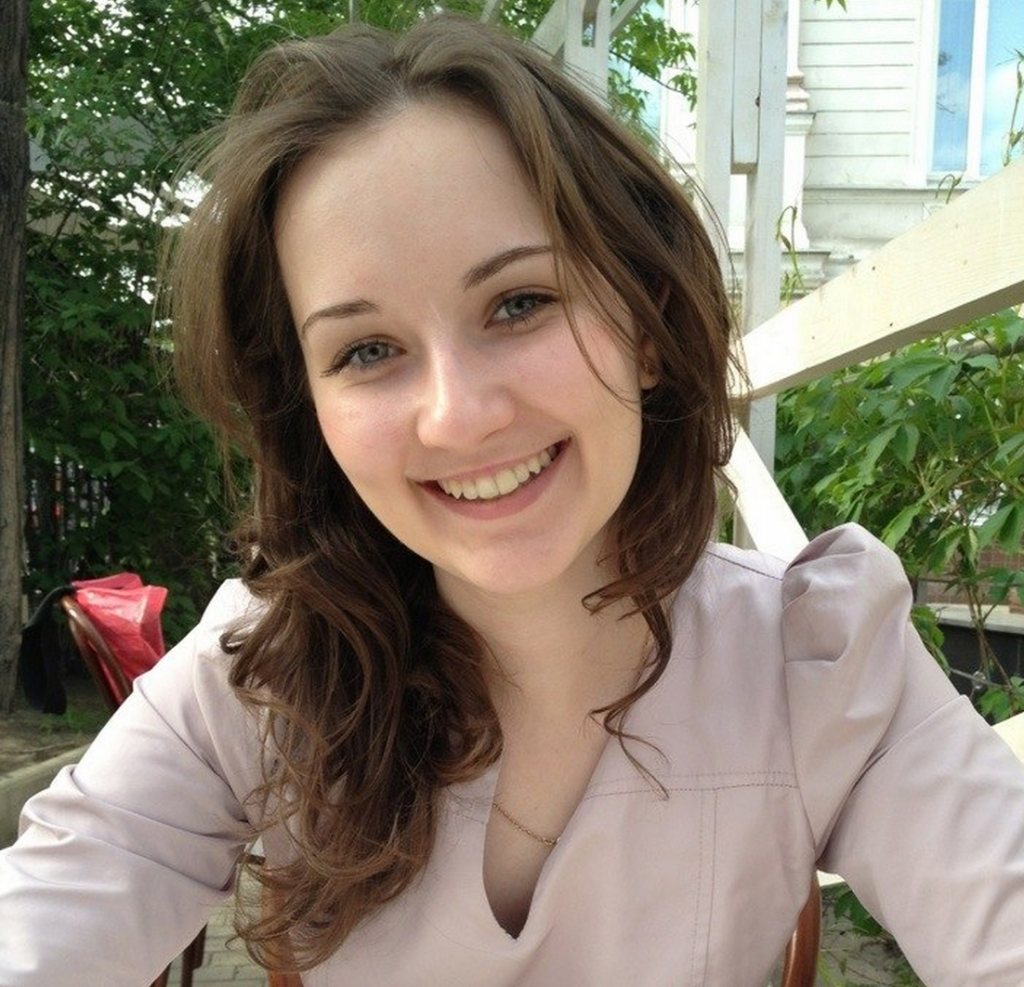
SONIC Presentations at Sunbelt Conference
SONIC Members presented at The International Sunbelt Social Network Conference in Brighton, UK on June 23– June 28, 2015. The dates, times, and locations, as well as abstracts for select presentations, can be found below.

Abstracts
A Multi-Relational Event Model for Understanding Channel Selection
Aaron Schecter & Noshir Contractor
Relationships are inherently dynamic; they start, stop, and change over time. As a consequence, the notion of a binary link between two individuals fails to capture the richness and complexity of interpersonal relations. Longitudinal network analysis, specifically actor-oriented models, determine how individuals craft their networks over time as a result of some underlying objective function. However, this approach only utilizes discrete observations of static networks. Given the rise of time-stamped event data, more granular statistical methods are required to leverage the information gained when every interaction can be observed. The relational event framework remedies that methodological gap. This model is a statistical tool for analyzing sequences of dyadic interactions and identifying emergent drivers of interpersonal action. While relationships cannot be viewed as static entities, they also cannot be viewed as one dimensional. Rather, interactions can be classified by their content, their affect, their method of delivery, or numerous other categories. While the original model was derived to handle multiple classes of relations, there has not been significant investigation into the implementation of a multi-relational event method or the resulting theoretical implications. In this study we address this issue through an explicit formulation of the relational event model which incorporates multiple types of dyadic actions. Additionally, we advance the notion of the multi-level sequential structural signature in the context of various relational classes. Specifically, we explain how the interplay of multiple dynamic interpersonal processes can predict future behaviors of any type. Our approach will be illustrated in the context of channel selection within a multi-team system (MTS) communication network. This study will make use of interpersonal communications from a large-scale series of experiments; data was collected from 17 laboratory sessions simulating a multi-team system scenario, each involving 20 unique participants (340 total individuals). During the experiment, individuals were able to communicate via text, which is a low richness channel, or audio, which is a high richness channel. We posit that the sequence, direction, and timing of interactions over each communication channel can be used to predict the efficacy of a MTS. Specifically, we hypothesize that the emergent behavioral trends that drive channel selection will reflect how effectively teams coordinate internally, teams coordinate externally, and leadership is expressed.
Funded by:
Army Research Lab W911NF-09-2-0053
Leveraging Who, Whom, and How: A Social Networking Tool to Scale Up Health Innovation in India
Noshir S. Contractor, Anup Sawant, Harshad Gado, Ivan Hernandez, Leslie A. DeChurch, Michelle Shumate
In the developing world, the day a baby is born is the most dangerous of their life. The lives of a great many mothers and their newborns could be saved not with expensive treatments and equipment, but with the adoption of basic health care practices. Simple practices like hand washing – before, during, and after childbirth – could save a great many lives. The biggest obstacle to improving health care in the developing world is not cost, it is social norms. Atul Gawande called this the problem of getting “slow ideas” to spread: “…neither penalties nor incentives achieve what we’re really after: a system and a culture where X is what people do, day in and day out, even when no one is watching… Getting to ‘X is what we do’ means establishing X as the norm. (Gawande, 2013).” This paper discusses the design, development, and deployment of a novel social networking tool designed to hasten the spread of slow ideas through social networks. We bring the power of networks and social motives together in a recommender system, the “Influence Strategy Wizard,” to aid development workers in identifying the most pivotal influencers (i.e., whom), the people they go to for advice (i.e., who), and the influence strategies most likely to activate their social motives (i.e., how) to spread slow ideas needed to improve health care. Prior research suggests that people are highly influenced by those in their immediate networks. Therefore, to better implement health innovations, it is essential to identify central individuals who are best positioned to influence a large segment of people. Complementing the influence of networks, psychological research suggests that people are influenced by messages that address universal motivations such as the desire to be accurate or affiliate with people. The current project draws on these insights to build a tool that helps health workers identify the key influencers who are best able to scale up family health innovations throughout the districts of Bihar, as well as the strategies to influence them. We interviewed 9,799 government health employees, 146 TSU personnel, and 57 development partners throughout 15 districts in Bihar, India. Respondents were asked whom they go to for advice about maternal & newborn health, improving nutrition, increasing infant immunizations, encouraging family planning, data-driven management plans, and training practices for family and health workers. Additionally, we surveyed government employees on their social motives so that targeted persuasion strategies could be built into the Wizard. From these networks, we can calculate who are the most central people in other’s advice networks for various innovations. We embed this data in the Wizard dashboard, accessible from any web-enabled device. Development workers select the type of innovation they want to implement, and who they want influence. If they are unsure of whom to influence, the Wizard recommends one. The tool then displays the network pathway and mechanism – who, whom, and how – needed to gain support for the innovation.
Funded by:
Bill and Melinda Gates Foundation Global Development Grant 21640
Bill and Melinda Gates Foundation Family Health Division Grant 1084322
Detection of Perfunctory Citations: Nuancing Impact Factors and Weighting Citation Networks to Account for Citation Heterogeneity
Ryan Whalen, Yun Huang, Anup Sawant, Noshir Contractor
Citations and citation networks provide valuable information and insight, helping us understand journal impact (Glänzel & Moed, 2002), scholarly productivity (McNutt, 2014), and knowledge structure and flow (Börner, Penumarthy, Meiss, & Ke, 2013). However, their use is complicated by the difficulty in distinguishing between meaningful and less-meaningful citations. This paper proposes a method utilizing full text of citing & cited papers, and keyword matching to provide more meaningful measures of citation weight and article impact. While there are many reasons to include citations to previous work, perhaps the greatest distinction in citation types is between “perfunctory” or “ritual” citations and citations that engage more deeply with the cited work. Empirical work shows that perfunctory citations make up a significant portion of all citations, with estimates ranging from 10–50% (Bornmann & Hans-Dieter, 2008). Traditional citation analyses largely ignore the strength of citation ties ignoring distinctions between perfunctory and substantive citations. We propose a method of semantic citation analysis to help address this lack of precision in citation studies. This method relies on traditional methods of citation analysis, but also takes into account the content of the cited and citing article via keyword extraction and comparison. Our method proceeds in four steps: first, we identify the universe of papers to be analyzed. For this early-stage study we examine all articles appearing in the journal Social Networks. Second, we identify the citation network between the articles in the dataset. At this stage we take into account not only which papers cite which papers, but also the text of the paragraph that the citation appears in. Third, we extract keywords from each of the papers in the study and associate those keywords with their origin paragraphs. We use multiple keyword extraction methods, including automated algorithmic extraction and by matching with a set of keywords appearing in the Web of Science. Finally, we use the keyword similarity between citing and cited papers to compute four novel metrics of citation weight and impact factor. These measures are calculated by weighting terms according to the tf-idf and calculating cosine similarity between Our four measures allow us to distinguish between impact factor and citation weights in accordance with how much similarity there is between the citing and cited articles’ content, helping us detect perfunctory citations and weight them accordingly. The measures include: Impact factor accounting for from content similarity between cited paper and citing paper; Impact factor accounting for from similarity between cited papers and their citing paragraphs; Citation weighting based on paper similarity; and Citation weighting based on paper and citing paragraph similarity. Our early findings show that taking into account the text of citing/cited articles provides meaningful information that nuances citation network analyses. Our presentation will more fully describe our data and methods, the metrics we use, and our results.
Funded by:




